Problems and Solutions
by Jess Erdman, Content Marketing LeadAugust 2022

If you’ve ever used a computer program to translate text from one language to another, interacted with a customer service chatbot, or used speech-to-text software, you’ve interacted with Natural Language Processing (NLP), a branch of AI that focuses on creating ways for computers to understand text and speech just as humans can.
NLP in eCommerce is used to build text-based fashion search for shoppers. But, as any frustrated shopper knows, NLP can only capture part of the language of eCommerce. Fashion language develops rapidly–so rapidly, that spending just a few months outside of the fashion cycle might leave shoppers confused.
The language that fashion uses comes from regionalisms and trends–and fashion taxonomy (the naming and classifying of fashion terms) is described as a “living, breathing object.” This creates a near impossible task for NLP to capture all of the language that humans use to search for products, when that language is constantly evolving.
In fashion, new vocabulary is constantly being created, and needs to be manually added to a fashion glossary that NLP in eCommerce can understand. For example, a shacket is an oversized shirt-jacket combination that rose to popularity in 2022. In order for shackets to appear in the correct place in search filters, it needs to be grouped with shirts, jackets, and other outerwear.
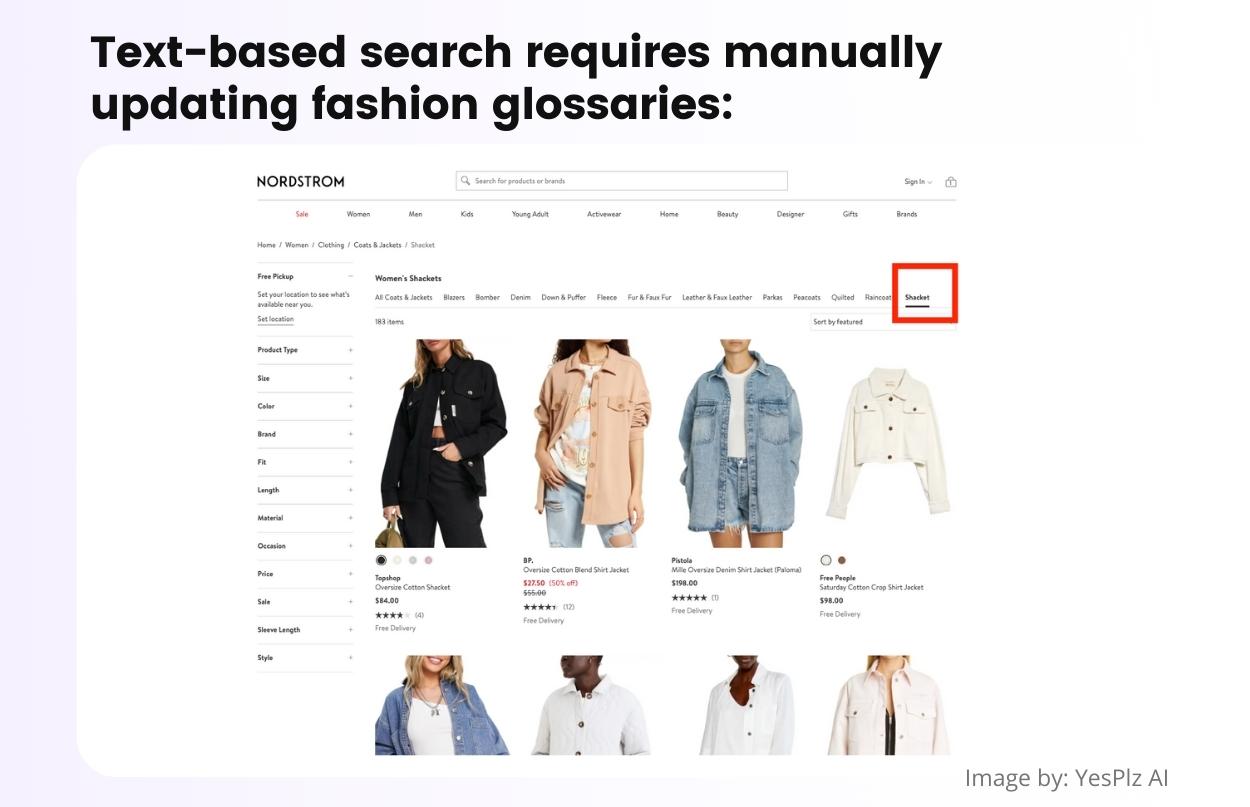
Based on our research, shoppers tend to search in broad categories, with specific product attributes. However, this is difficult to capture with text-based search because it requires extremely robust product descriptions.
For example, “I’m looking for a black square-neck top with long sleeves” includes information about color, neckline, and sleeve length–and that phrase most likely doesn’t exactly match a product description. Most likely, search results will include a mix of these words that don’t capture the original search query–for example, a shirt that’s long in length but short-sleeve, or includes the word “black” in the product title but isn’t black in color.
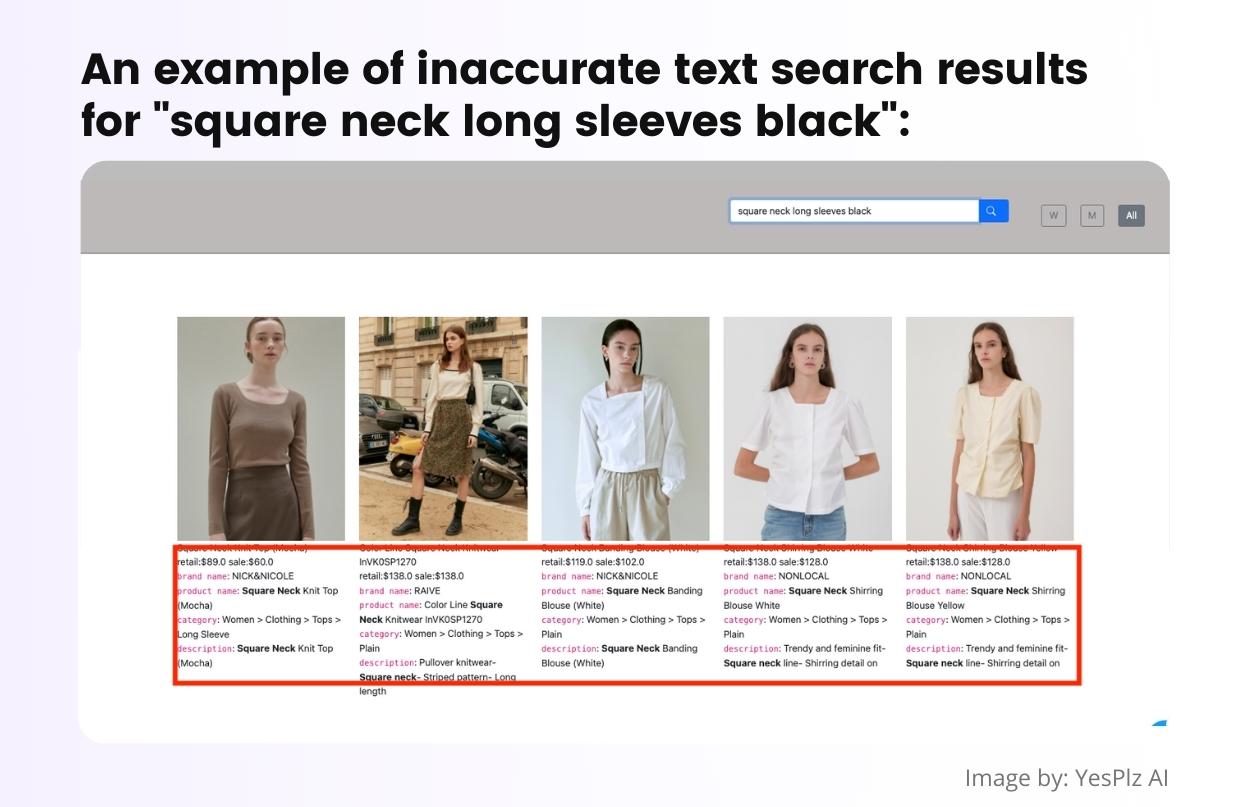
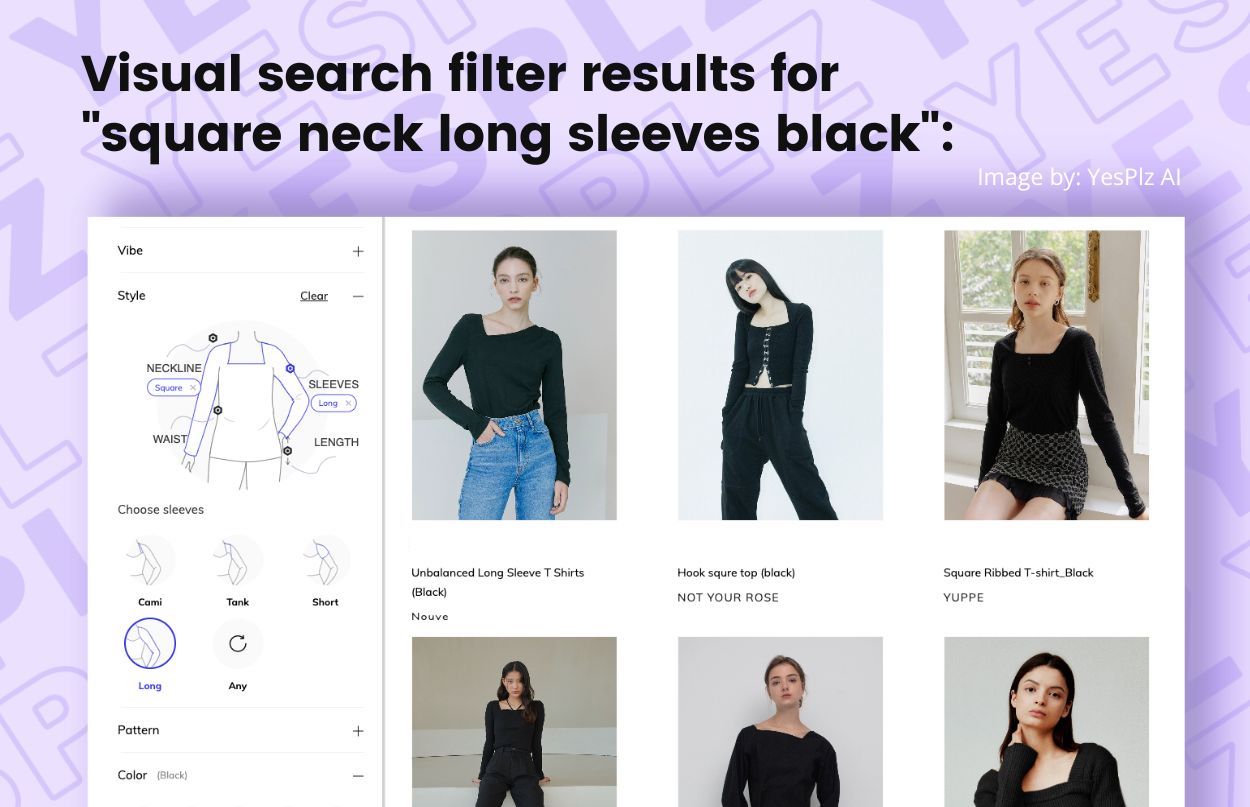
Language is complex–and the language behind fashion search is even more complex, as shoppers attempt to use an imprecise naming system to describe a visually-oriented field.
Also inherent in language for fashion search are synonyms, abbreviations, and nicknames. A “shacket” could also be described as a “shirt jacket”--other shoppers might use product attributes to create their search query–”boxy oversized lightweight jacket”--and others won’t know how to name the product, but could visually recognize it in a store.
When shoppers are searching an eCommerce website, they tend to either provide information that is too limited or too broad for accurate NLP in eCommerce text-based search results. And, it’s not the fault of the shoppers–it’s simply the nature of using a limited mode of communication.
Shoppers often want to see subtle themes or “vibes” portrayed in their search–for example, a “romantic-style cocktail dress.” But, the word “romantic” has different connotations for every person. Romantic can be described in many different ways–for some shoppers, it includes puffy sleeves; for other shoppers, it includes long, flowy layers. Text-based eCommerce search is never going to be able to resolve these differences because there are millions of them.
NLP in eCommerce is still important to include in fashion search. But, it’s much more effective when used in conjunction with fashion visual search.
Fashion visual search is a rapidly growing area of fashion AI that uses visual information to guide search queries. This can include camera search, where users upload their own pictures of products, or visual interface search, where users can search and filter their preferred product attributes using a virtual mannequin.
Visual search resolves the problem of limited text information and the struggle to find matching keywords, by simplifying a search query. Through predefined search parameters that are visual, it’s more likely that search results will be more accurate.

When it comes to thematic searches, like “romantic cocktail dress,” visual search can include richer product information like silhouette, color, pattern, and material to generate what constitutes a “romantic” mood. Text-based search, without visual search, can’t generate moods or subtle vibes.
Hybrid search relies on fashion AI to understand both text and visually learn product specifications, creating powerful, accurate search results.
Fashion AI can also combine image and text into one search query to create more robust search that naturally mirrors the way users look for products.
For example, a user might not know the name of a specific type of silhouette, but could use camera search or visual interface search to visually demonstrate the silhouette, and combine with a text-search query.
AI can also combine text and image to learn new trending words by using an open data set, like social media. The combination of text and image AI has powerful implications for the future of fashion search.
Contact YesPlz to learn more about hybrid fashion search solutions
Written by Jess Erdman
Content Marketing Lead
I'm passionate about creating cool content. The best part? I get to learn new things about fashion tech and ecommerce everyday. Have an idea or opinion about this article? Reach out at jess@yesplz.ai
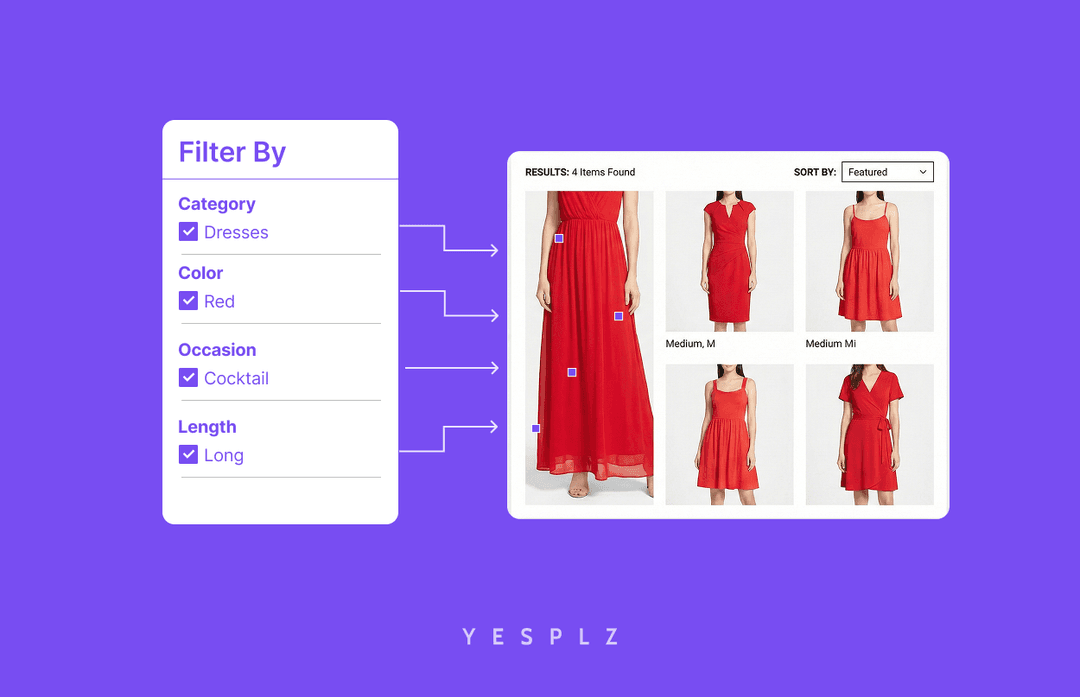
Stop losing sales to poor product filtering. Discover how AI simplifies creating Shopify filters, saving you 25-50 hours per 100 products.
by YesPlz.AI
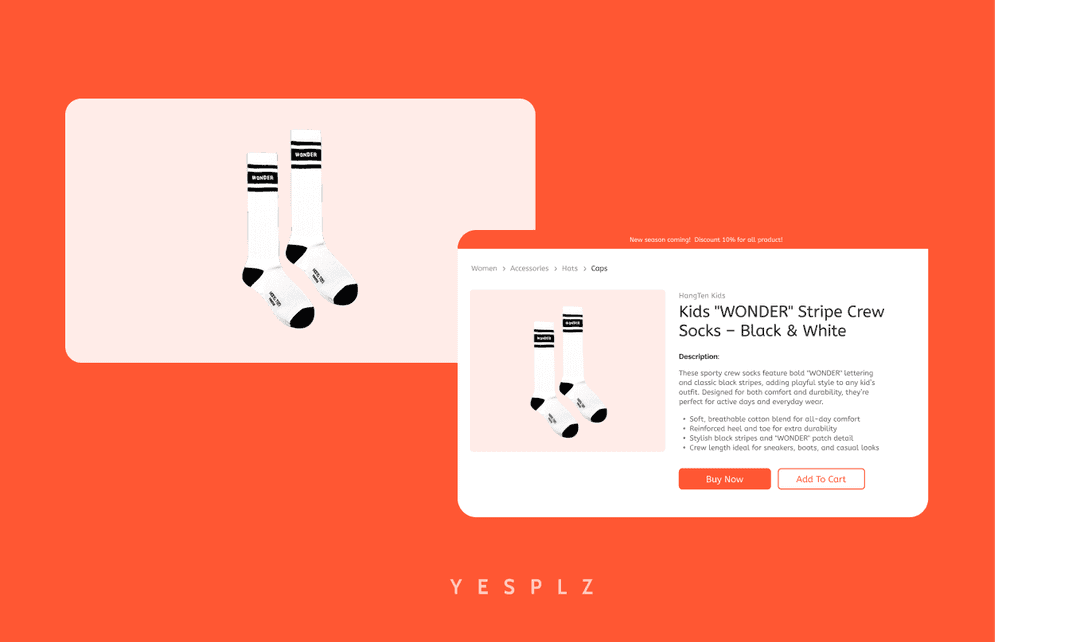
Automate Shopify product pages and cut 50–100 hours of manual work. AI generates product titles, descriptions, and metadata instantly from product images.
by YesPlz.AI